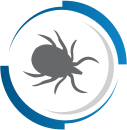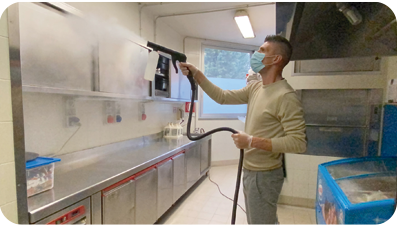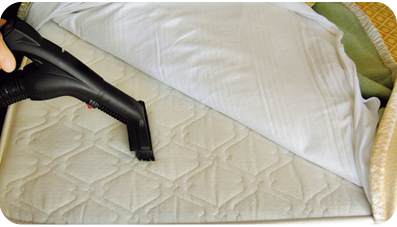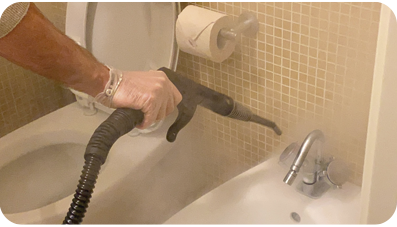

Pest control
Domestic environments, HO.RE.CA., Industrial environments, Facilities, Transportation
It kills germs and bacteria.
With prolonged periodic use, over time, bacteria and viruses become resistant to chemical treatment.
This can have serious repercussions in environments where hygiene is an absolute imperative, such as in the food and medical industries. Over time, it is necessary to increase the amount of detergents and disinfectants used to maintain the required hygienic results.
This increases the risk of chemical contamination of food products. In addition, since many people are allergic to detergents, their use can have serious effects in hospital environments.
Pathogens are not resistant to the thermal shock of steam cleaning. Research has shown that saturated steam treatment eliminates 99% of bacterial fungi and mold on virtually any surface.
Unlike other cleaning methods, steam can enter all cracks and crevices on the surface. Even with frequent steam cleaning, pathogens cannot generate immunity to thermal shock.
The absence of water, the instant drying of cleaned surfaces and the reduced use of detergents are factors that help maintain optimal hygienic conditions.
Fights allergies and diseases.
Allergens produced by house dust mites are among the most common triggers of asthma.
There are at least 15 mite allergens. Studies have shown that a significant part of asthma in adults is due to atopic sensitization to dust mites. It has been estimated that up to 1.2 billion people could have some kind of chronic sensitization to dust mites. Typical symptoms of allergies to house dust mites are itching, sneezing, inflamed or infected eczema, watery/red eyes, runny nose and obstruction of the lungs.
Protect your loved ones from parasites.
Ticks: these small arachnids live on the blood of mammals and birds. They are vectors of a number of serious diseases. They are often brought home by pets. Steam cleaning is the best weapon against these infestations. The steam also penetrates the cracks and crevices where ticks can be hidden.
Bedbugs: we have learned that control of bedbugs cannot be achieved with pesticides alone. A systematic approach is needed.
Until recently, professionals recommended throwing away the affected bed bases and mattresses. Fortunately, today we have discovered that dry steam, when applied to mattresses, sofas and carpets, eliminates virtually all stages of bedbugs, including eggs that are difficult to kill.
Mites: mites cause various forms of allergic diseases, such as hay fever, asthma and eczema, and are known to aggravate atopic dermatitis. Mites are usually found in warm and humid places, including beds.
It is believed that the inhalation of mites during sleep exposes the human body to some antigens that induce a hypersensitivity reaction. It is believed that dust mite allergens are among the heaviest dust allergens.
Regular steam disinfection of mattresses and blankets can help kill mites.
Fleas: this small leavy insect without wings feeds on the blood of mammals and birds. Sometimes he transmits diseases through his bite. The combination of dry and aspirated steam should definitively eliminate fleas from the environment.
The bedding environment is optimal for most dust mites, and comparative studies have shown that the density of dust mites on mattresses is on average higher than 2500 per gram of dust. Cleaning the beds with most vacuum cleaners will not remove allergens from dust mites, but will throw them into the air and increase their volatility. Exposure to a high-temperature shock will generally be fatal for house dust mites. It has been shown that cleaning with dry steam at lethal temperatures is enough to kill all the dust mites in the bedding.



